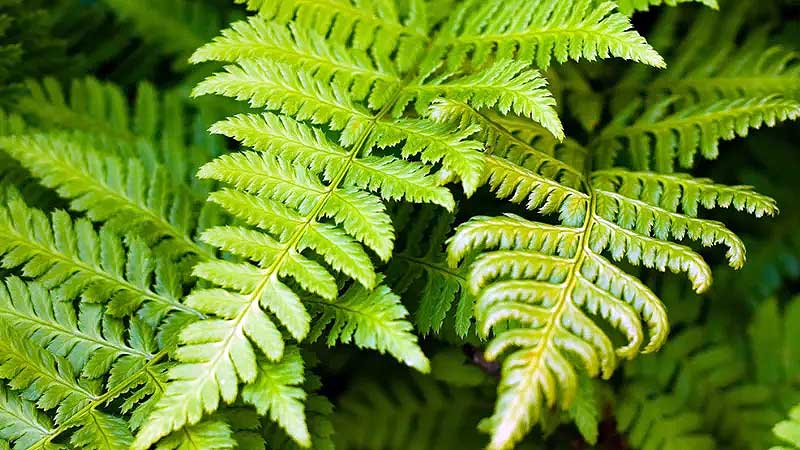Neil Timm came to the May meeting of Ticknall Garden Club on 8 May 2023 to talk about a rather underrated group of plants, the world of ferns. They are quite unlike any other plants in that they do not produce flowers and seeds but spores. On a warm summer’s day their fronds bend and flick thousands of spores in a cloud spreading far and wide. They germinate in two phases, first as a tiny propolis which then develops almost three seasons later as a recognisable little fern plant. Breeding ferns is undeniably a long-term commitment!
Most ferns have pinnate feathery fronds but not all. The hart’s tongue fern has strap like leaves, parsley fern has finely divided leaves, blechnum “pen of the sea” has narrow ladder- like leaves and the fishtail fern has holly-like leaves.
Ferns grow in all sizes from the brittle bladder fern and wall rue found growing in cracks in walls to the Australian tree fern which needs protection in winter.
Polypodium vulgare is a tough little fern which will grow anywhere. Asplenium likes a good soil but is easy to grow. Polystichum is reliable and grows in all conditions. Athyrium is a mainly deciduous, more tender fern but some have more colourful leaves.
Most ferns are easy to grow and relatively compact. They provide structure and are often evergreen and they suit many locations in the garden. They combine well with bulbs and primulas. There are ferns for dry shade, rocks and crevices, damp places, narrow borders and companion planting in borders and ground cover.
Bracken is different in that it grows very tall, is fast spreading and does not grow from a crown like most ferns do. Another unwelcome fern is the horsetail, an “evil weed” whose roots can go down 40 feet into the subsoil. The speaker’s solution was to pour weedkiller down their hollow stems or move house! A floating fern called fairy moss is a highly invasive plant which quickly chokes waterways and is now illegal to grow.
In their time ferns have had a variety of uses. In the Victorian era the spores were mixed with gunpowder for fireworks and a convincing lightning flash in the theatre. The first fingerprinting used fern spores. They have also been used to clear arsenic from the soil.
Ferneries were the height of fashion in the Victorian era and although mostly hardy they chose to show them off in greenhouses. Collecting them became an obsession and probably caused ecological damage in the process.
Neil Timms has spent his life studying and growing ferns and his talk transported his audience into this fascinating world. So much so that they were keen to buy the plants he had brought with him to transfer some of that magical green world into their own gardens.






Leave a Reply